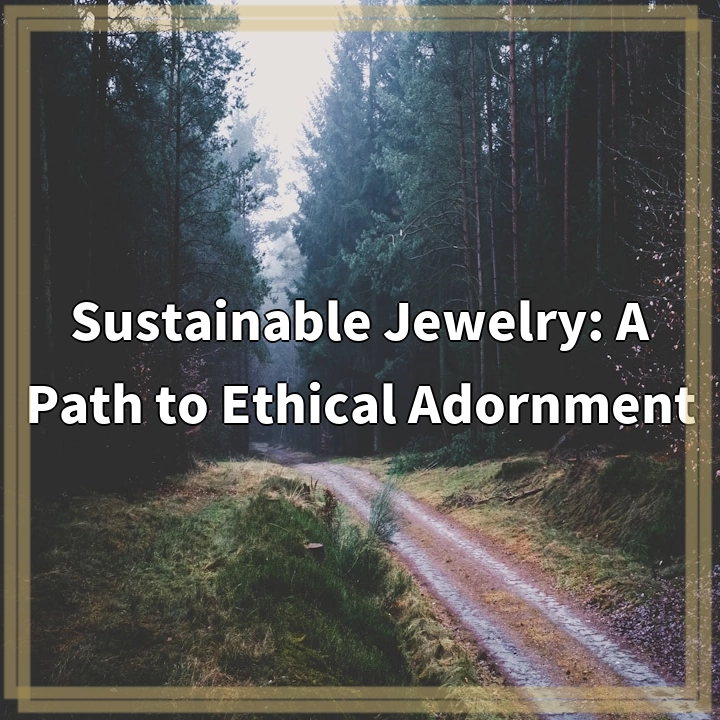Physical Address
304 North Cardinal St.
Dorchester Center, MA 02124
Physical Address
304 North Cardinal St.
Dorchester Center, MA 02124

Sustainable jewelry, also known as ethical jewelry, refers to accessories made with a commitment to social and environmental responsibility. It encompasses various principles and practices that aim to minimize the negative impact of the jewelry industry on people and the planet.
One of the main challenges in sustainable jewelry is ensuring responsible sourcing of materials. Precious metals and gemstones can be linked to human rights abuses, including child labor, forced labor, and environmental degradation. It is crucial to trace the origin of these materials and support suppliers that follow ethical practices.
The complexity of the jewelry supply chain often makes it difficult to trace the journey of a piece, from mine to market. Lack of transparency can lead to unethical practices being hidden, making it challenging for consumers to make informed choices. Transparent supply chains are essential for promoting accountability and ensuring that sustainable claims are not just greenwashing.
The extraction of metals and gemstones can have a significant environmental impact, including habitat destruction, water pollution, and carbon emissions. Sustainable jewelry aims to mitigate these effects by using recycled materials, promoting responsible mining practices, and adopting eco-friendly production methods.
Many artisanal and small-scale miners, especially in developing countries, face exploitative working conditions and receive inadequate compensation for their labor. Sustainable jewelry fosters fair trade principles, ensuring fair wages, safe working conditions, and empowerment of communities involved in the supply chain.
Despite the growing interest in sustainable fashion, many consumers are still unaware of the issues surrounding the jewelry industry. Lack of awareness hinders the demand for ethical jewelry and slows down the transformation towards a more sustainable and responsible industry. Education and awareness campaigns are crucial to highlight the importance of sustainable jewelry and empower consumers to make conscious choices.
Addressing the real-world problems associated with sustainable jewelry requires collective effort and commitment from various stakeholders. Implementing strict guidelines for sourcing materials can ensure that precious metals and gemstones come from responsible and ethical sources. This may involve partnering with suppliers who adhere to fair labor practices and environmentally conscious mining methods.
Increasing transparency throughout the supply chain is crucial. Utilizing technologies like blockchain can help trace the entire journey of a piece, providing consumers with credible information about its origin and production processes. Collaboration among industry players is key to establish standardized transparency practices.
Promoting the use of recycled materials can significantly reduce the demand for newly extracted resources. By encouraging recycling and upcycling practices, sustainable jewelry brands can contribute to the reduction of environmental impact associated with mining and extraction.
Partnering with and supporting artisanal and small-scale miners can help improve working conditions, ensure fair wages, and empower communities. Investing in training programs, capacity building, and certification schemes can enhance the livelihoods and rights of these miners.
Increasing consumer awareness is crucial for driving demand for sustainable jewelry. Brands should educate consumers about the social and environmental impact of traditional jewelry practices, while highlighting the benefits of ethical alternatives. Engaging consumers through campaigns, storytelling, and transparent communication can empower them to make informed choices.
Sustainable jewelry is not just a trend; it is a path to ethical adornment that considers the well-being of people and the planet. By addressing the challenges and implementing solutions, the jewelry industry can transform into a more sustainable and responsible sector.
If you’re wondering where the article came from!
#